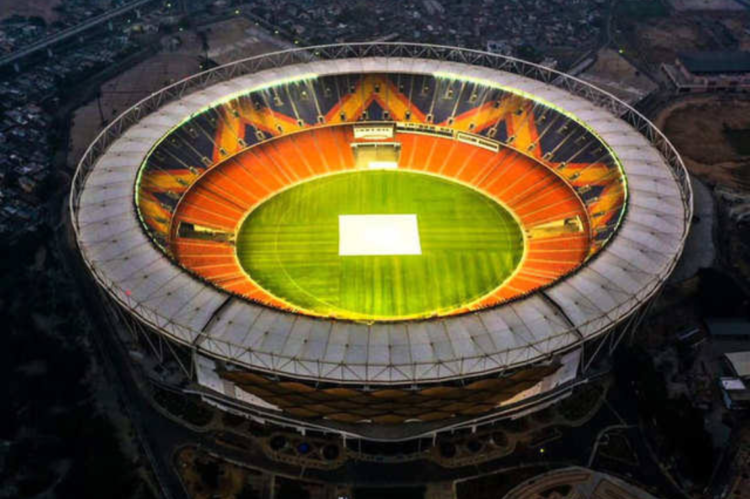Overview of Cricket Stadiums
Cricket stadiums are iconic venues that host the exhilarating sport of cricket. These stadiums serve as the battlegrounds where players showcase their skills and fans come together to cheer for their favorite teams. From the historic Lord’s Cricket Ground in London to the modern marvel of the Melbourne Cricket Ground in Australia, these stadiums hold a special place in the hearts of cricket enthusiasts worldwide.
The design and layout of cricket stadiums vary greatly, with factors such as seating capacity, location, and historical significance playing a crucial role. Some stadiums are known for their electric atmosphere and incredible acoustics, while others are revered for their picturesque settings and architectural splendor. Regardless of their size or style, cricket stadiums serve as the ultimate arenas where the spirit of the game comes alive, creating unforgettable moments for players and spectators alike.
Factors determining the size of a Cricket Stadium
Cricket stadiums vary in size based on several key factors. One significant determinant is the popularity of cricket in the region where the stadium is located. Countries with a large cricket following tend to have larger stadiums to accommodate the high demand for tickets and seats. Additionally, the frequency of international matches and tournaments held at a particular stadium influences its size. Stadiums hosting major events like the ICC Cricket World Cup or the Indian Premier League often have larger seating capacities to cater to the influx of spectators.
The historical significance of a cricket stadium also plays a role in determining its size. Older stadiums that have hosted numerous iconic matches and witnessed legendary cricketing moments tend to have larger capacities to honor their heritage. Moreover, the economic aspects of cricket, such as broadcasting rights and sponsorships, can impact the size of a stadium. Larger stadiums offer increased visibility and branding opportunities, making them more appealing to commercial partners and stakeholders in the cricketing industry.
Comparison of different Cricket Stadiums around the world
When it comes to cricket stadiums around the world, each venue boasts its own unique charm and characteristics. From the historic Lord’s Cricket Ground in England to the modern marvel of the Melbourne Cricket Ground in Australia, cricket stadiums vary in size, capacity, and architectural design. These stadiums not only serve as battlegrounds for thrilling matches but also stand as iconic landmarks in their respective countries.
The iconic Eden Gardens in India, with a seating capacity of over 66,000 spectators, is known for its electrifying atmosphere during matches. In contrast, the picturesque Newlands Cricket Ground in South Africa offers a more intimate setting with Table Mountain providing a stunning backdrop to the matches. Whether it’s the raucous cheers at the Wankhede Stadium in Mumbai or the serene ambiance at the Basin Reserve in New Zealand, each cricket stadium has its own story to tell and adds to the rich tapestry of the sport.
The history of Cricket Stadiums
Cricket stadiums have a rich history that dates back to the 19th century in England, where the sport originated. The first purpose-built cricket stadium is believed to be the Melbourne Cricket Ground in Australia, constructed in the mid-19th century. These early stadiums were often basic in design, with limited seating capacity and amenities compared to modern facilities.
As cricket gained popularity worldwide, the demand for larger and more sophisticated stadiums grew. This led to the construction of iconic venues such as Lord’s Cricket Ground in London, Eden Gardens in Kolkata, and the Sydney Cricket Ground in Australia. Over time, cricket stadiums evolved to accommodate larger crowds, implement advanced technology for broadcasting matches, and provide enhanced facilities for players and spectators. The history of cricket stadiums reflects the sport’s global appeal and the evolution of sports infrastructure over time.
Features of a Cricket Stadium
Cricket stadiums are not merely grounds for matches but are iconic structures that hold rich history and significance in the world of sports. These stadiums are not just places where games are played but are venues that embody the spirit and passion of the game. The features of a cricket stadium play a crucial role in creating an unforgettable experience for players and spectators alike.
From the lush green outfield to the meticulously maintained pitch, every aspect of a cricket stadium is designed to meet international standards. The seating arrangement, lighting, and amenities are all carefully planned to ensure the comfort and enjoyment of all visitors. Moreover, the architectural design and acoustics of the stadium add to the overall atmosphere, creating an electrifying environment that enhances the thrill of the game.






















